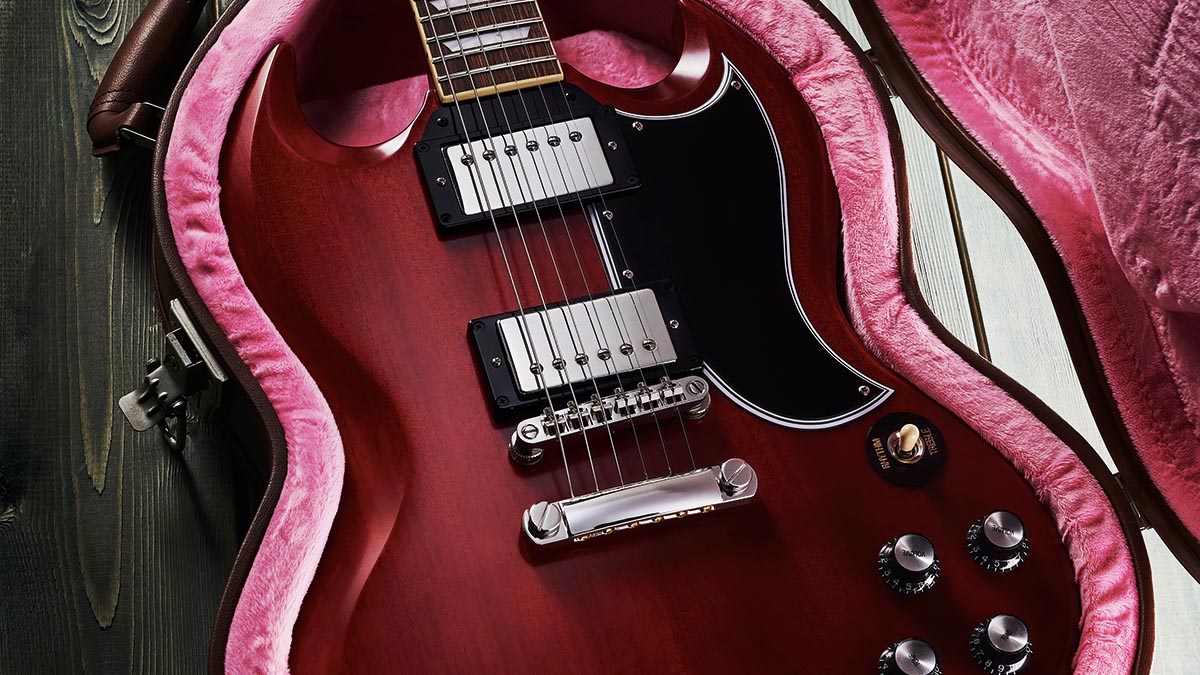Guitar World Verdict
Another budget guitar from Epiphone that gives Custom Shop Gibsons a run for their money.
Pros
- +
Looks.
- +
Finish.
- +
Playability.
- +
Value and Gibson SG attitude.
Cons
- -
Some might struggle with balance and the offset neck position.
- -
The pickup rings seem slightly oversized.
You can trust Guitar World
The Gibson SG, perhaps rather like Fender’s Jazzmaster, the Rickenbacker 330 or even Gretsch’s 6120, is one of those guitars that most of us think, “I really should get one of those.”
Yet as often than not these fine instruments stay languishing on the shelf in favour of another Strat, Tele or Les Paul. Well, if Epiphone’s recent form continues with this incarnation of the mother brand’s pointy-horned wonder, perhaps now might be the time for that to change.
The SG’s entry to the market was somewhat controversial, since initially it bore Les Paul’s moniker, but the legendary musician, electronics genius and inventor didn’t like the guitar.
He thought it was too flimsy and demanded Gibson remove his name. Hence the birth of the ‘Solid Guitar’ (SG) in 1961. But by the time of Les’s request quite a few ‘SG’ Les Pauls had been shipped and the model’s rarity has made it sought after and collectible.
Now, the Epiphone-badged remake at just $849, including a brown ‘Lifton’ style case, brings the model’s many charms to the masses at a fraction of the cost of an original, or even a Gibson Custom Shop version.
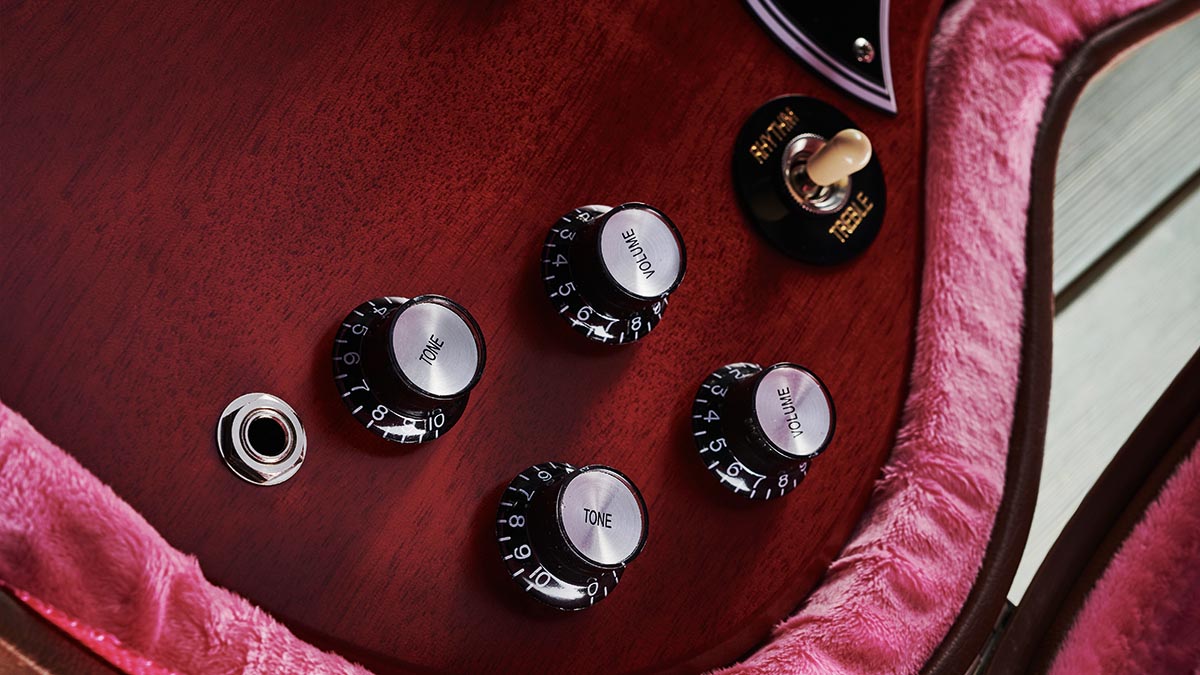
Utilising identical electronics and hardware to the outgoing guitar, the SG-style Les Paul’s looks (we’ll simply call it SG from now on) were so radically different that it was to all intents and purposes a completely different instrument. Gibson created a striking, heavily chamfered 31mm (1.25-inch) mahogany body and mated it to a mahogany neck that joined the body at the last of its 22 frets.
On the originals, the body and neck were each one piece of Honduran mahogany, now a restricted species, so our Epiphone has a two-piece body of unspecified mahogany, while the neck is a single piece of the same.
The fingerboard is Indian laurel, a most attractive rosewood alternative and rather nicer than the indifferent ‘ginger’ stuff so often found on instruments these days.
Les did have a point about the SG’s sturdiness, or lack of it. Even though the guitar features a long tenon that runs deep into the body, the routing for the neck pickup removes much of it, leaving the instrument vulnerable at that point – just as it is at the headstock, that other notorious danger area.
However, this very lightness of construction made it a stunningly playable guitar, and lent it a set of tones quite distinct from that of its heftier forbear.
The SG Standard also carried over the bound 22-fret fingerboard with trapezoid inlays in faux pearl, just as we find here. Epiphone has retained the beautifully dimensioned medium C-profile neck, and our guitar is also faithful to the original with its small pickguard – later 60s versions, such as Angus Young’s, featured the larger one that covered much of the body and offered cheaper production since the pickups were mounted on it.
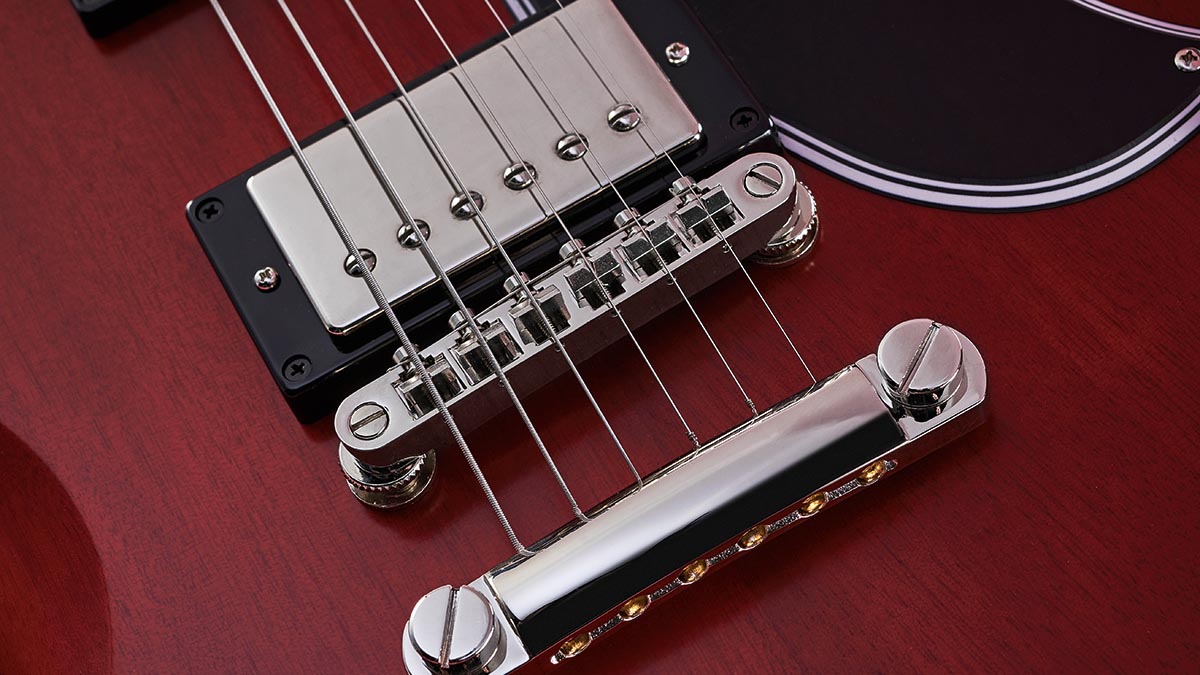
Due to the guitar’s pointed top horn it was not practical to mount the strap button there, so instead we find it on the back, by the heel.
This has always made the guitar’s balance on a strap something of a compromise and, with the unusual 22nd-fret neck join, helped to push the fingerboard off to the player’s left (on right-handed instruments). However, we’ve never heard Angus, Pete Townshend, Eric Clapton or any other famous SG player complain about it; they simply worked around the problem and got on with playing.
As we’ve seen with several of the Epiphones we’ve looked at recently – notably the superb Joe Bonamassa ‘Lazarus’ Les Paul and BB King ‘Lucille’ models – Epiphone has gone to town on the SG’s hardware and electronics.
Our bridge is the excellent LockTone tune-o-matic that stays in place with or without string tension and is said to offer better tone transfer to the body and pickups. Tuners are Epiphone Deluxe, based on the Kluson ‘keystone’ tuners found on the originals.
Pickups are the excellent Burstbuckers, a 2 at the neck and the slightly beefier 3 in bridge position. These are controlled by CTS tone and volume pots, and Mallory capacitors, while the output jack is by Switchcraft.
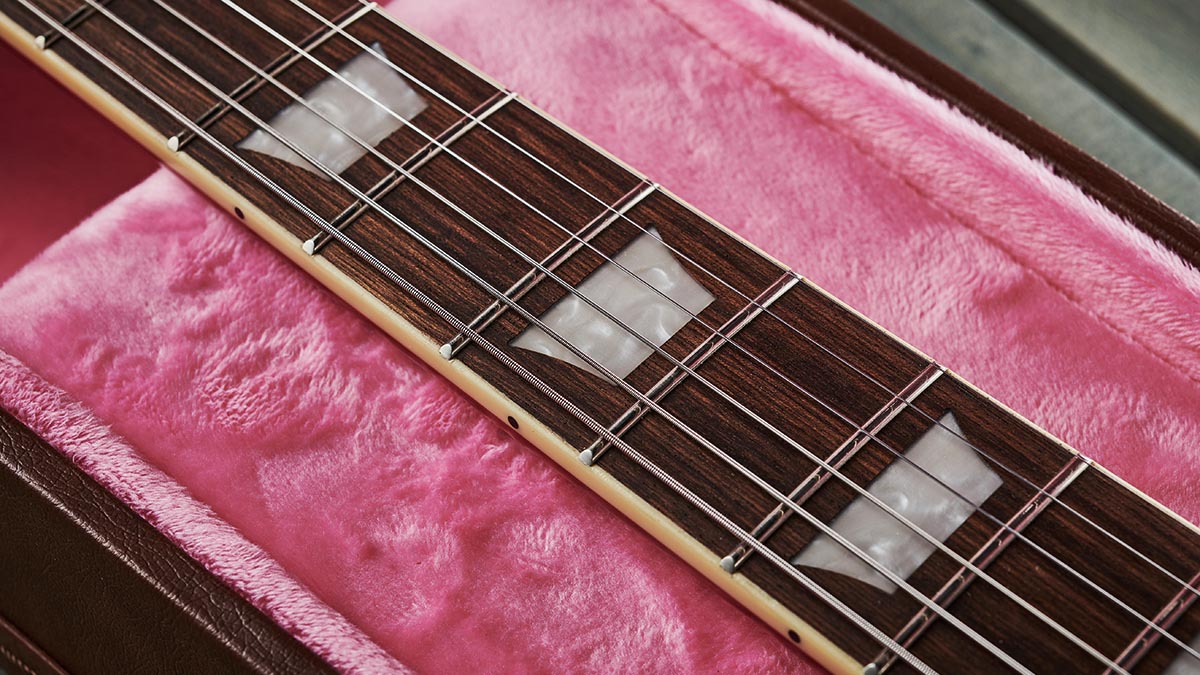
The guitar is available in two colours: the Aged Sixties Cherry you see here and which more or less typifies the SG; and the rarer Aged Classic White, which was more often seen on Custom versions but did make its way onto Standards, too.
The term ‘aged’ really just means a slightly matt look, and of course these Chinese-made guitars are finished in polyester rather than the traditional nitrocellulose of Gibsons vintage and modern. They both look great, though, and at this price it would be unfair to get picky – especially when you factor in the premium hardware and electronics.
Epiphone has gone to town on the SG’s hardware and electronics
A couple of final points. The SG carries the excellent 60s ‘small’ headstock design that’s so much more elegant than the previous rather lumpy outline. All plastic ware is black, and the bell-style truss rod features the famous ‘Les Paul’ script.
One tiny thing, though: the pickup surrounds’ end pieces (where the mounting and height adjustment screws sit) seem a touch wider than on original vintage SGs of the era and almost every other guitar fitted with humbuckers. It could just be a perceived difference, however – we’d need to take a ruler to an original ’61 to be sure.
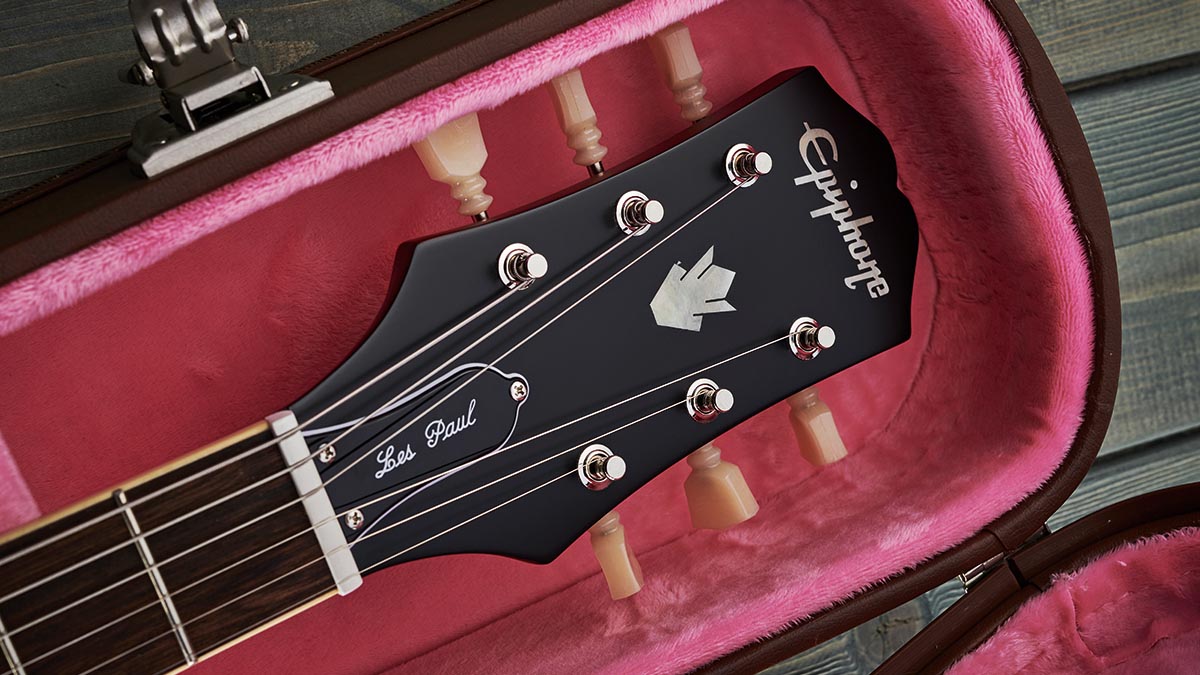
Feel & Sounds
As mentioned, the SG’s 22nd-fret neck join offers total access to the fingerboard. The standard 43mm nut width and medium C-section profile – with a depth of just over 18mm at the 1st fret and 20mm at the 12th – is a wonderland for exploration. Perfectly fretted with medium jumbo wire, it’s a completely freeing experience.
If you’ve never played an SG, you might find it slightly daunting at first since the 15th fret seems to be where the 12th used to be. But give it a few minutes and its open and unrestricting nature will have you playing dusty-end licks you’d long since consigned to posterity.
Fortunately, we had two great guitars on hand as sonic comparators: a Tom Murphy aged ’57 Les Paul and a Custom Shop ’63 reissue ES-335. Preconceptions tell us that the SG should sit somewhere between the two, and with our Blues Junior warmed up there’s never been a better time to test the well-worn theory.
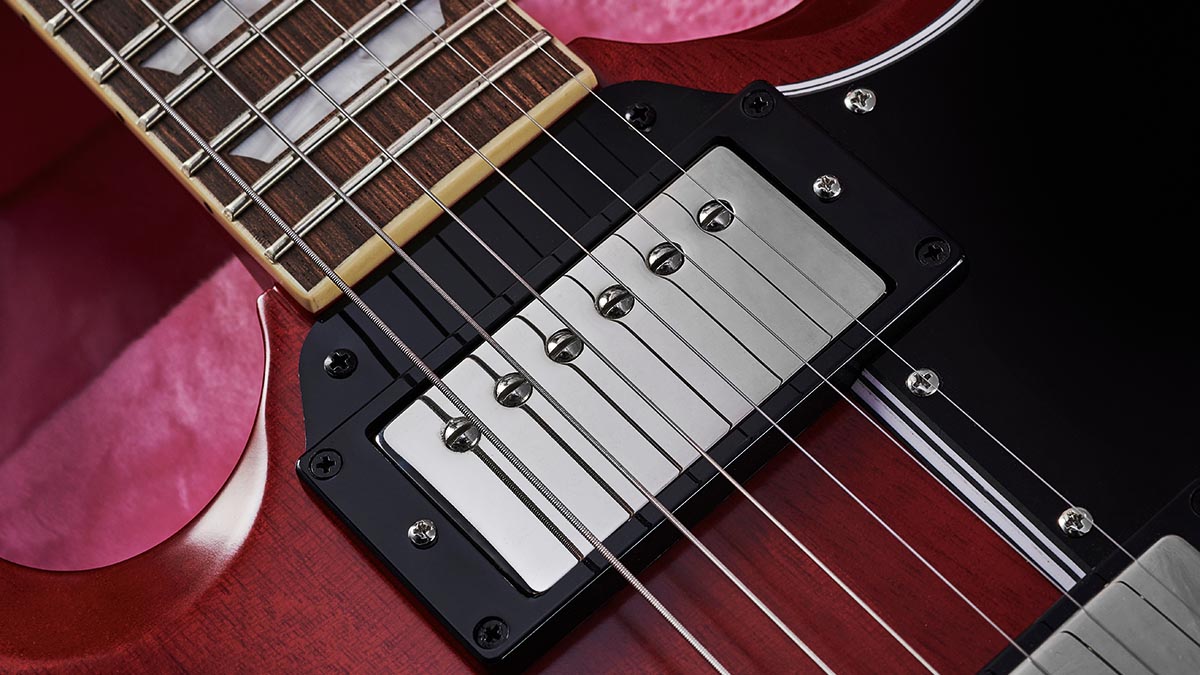
Well, without another two pages available to go into specifics, the Epiphone acquits itself remarkably well. It’s a little louder and more mid-focused than the ES-335 but not as poised and balanced as the Les Paul, although it does share similarities. Neither has much of the ‘honk’ that some humbucking guitars exhibit, but both offer rich, clear sounds on any pickup setting – the SG a little more ‘quacky’ with both Burstbuckers on.
While none of the guitars is flabby in the neck position, the Epiphone perhaps comes out as the softest. Whether such comparisons have any merit at all, who knows? All we can say with some certainty is that it would take a vampire bat or a barn owl (the two animals with the best hearing according to Dr Google) to separate them in a recording or stage mix.
That said, things we don’t spot at review volume can, of course, materialise when playing at stage levels. Overall, though, Epiphone’s latest solidbody is unlikely to disappoint.
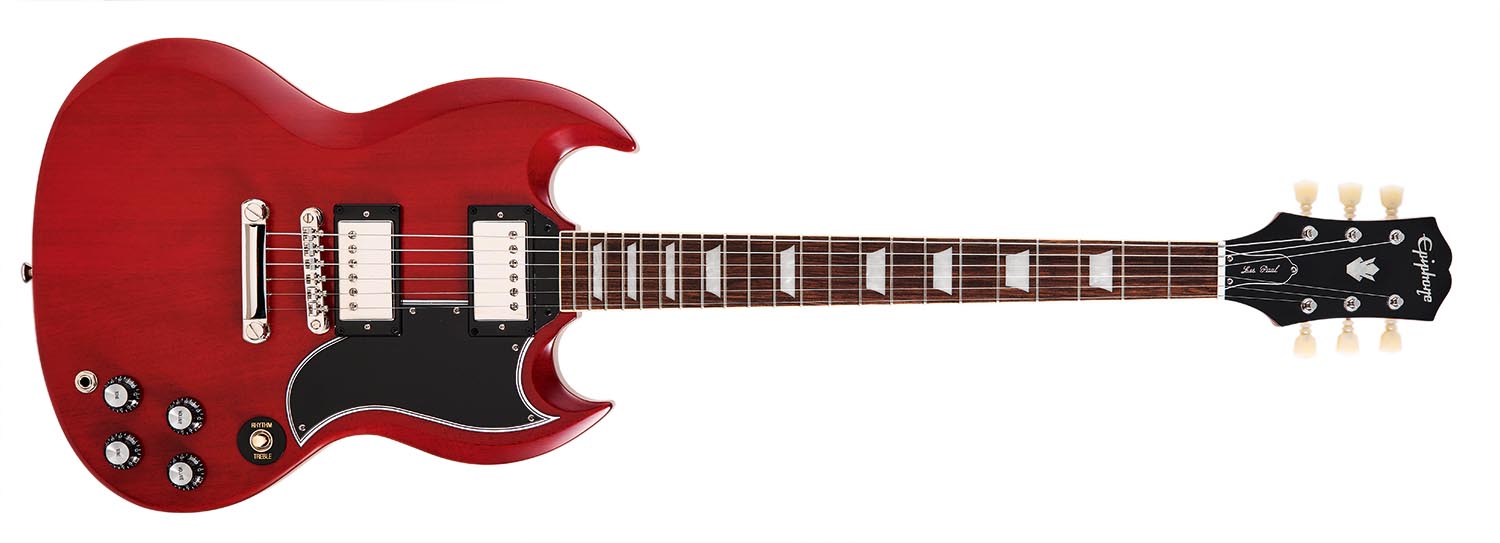
Verdict
At the risk of sounding like the record’s stuck, Epiphone has nailed it again. No, it’s not a nitro finish; yes, we’re bemused at those visually awkward pickup surrounds; and, of course, it exhibits the playing compromises and advantages of any other SG. But it represents phenomenal value, plays extremely well and stands up sonically to a pair of Gibsons that together outrank it a dozen-fold, price-wise.
There’s little more to say apart from, if the idea of an SG has tickled your fancy in the past but you’ve resisted for one reason or another, make an appointment with your local Epiphone dealer and audition one. Do it in a demo room, make sure you try it on a strap, and if the shop has a full-length posing mirror, check yourself out – that will probably tick the final box!
Specs
- PRICE: $849 / £749 (inc case)
- ORIGIN: China
- TYPE: Double-cutaway, solidbody electric
- BODY: Solid mahogany (two-piece)
- NECK: Mahogany, ‘medium C’ profile, glued-in
- SCALE LENGTH: 628mm (24.75”)
- NUT/WIDTH: Graph Tech Tusq/43mm
- FINGERBOARD: Bound Indian laurel, pearloid trapezoid inlays, 305mm (12”) radius
- FRETS: 22, medium jumbo
- HARDWARE: Epiphone LockTone tune-o-matic bridge and stud tailpiece, Kluson-style vintage tuners – nickel plated
- STRING SPACING, BRIDGE: 52mm
- ELECTRICS: Gibson Burstbucker 2 (neck) and Burstbucker 3 (bridge), 3-way toggle pickup selector, 2x volumes, 2x tones (CTS pots/Mallory capacitors)
- WEIGHT (kg/lb): 3.61/6.75
- OPTIONS: No
- LEFT-HANDERS: No
- FINISH: Aged Sixties Cherry (as reviewed), Aged Classic White – Aged Gloss
- CONTACT: Epiphone
In the late '70s and early '80s Neville worked for Selmer/Norlin as one of Gibson's UK guitar repairers, before joining CBS/Fender in the same role. He then moved to the fledgling Guitarist magazine as staff writer, rising to editor in 1986. He remained editor for 14 years before launching and editing Guitar Techniques magazine. Although now semi-retired he still works for both magazines. Neville has been a member of Marty Wilde's 'Wildcats' since 1983, and recorded his own album, The Blues Headlines, in 2019.
“It holds its own purely as a playable guitar. It’s really cool for the traveling musician – you can bring it on a flight and it fits beneath the seat”: Why Steve Stevens put his name to a foldable guitar
“Finely tuned instruments with effortless playability and one of the best vibratos there is”: PRS Standard 24 Satin and S2 Standard 24 Satin review
